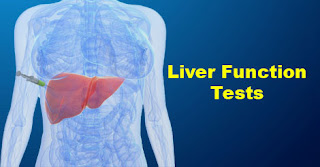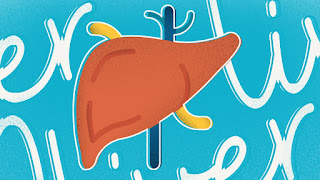What are the advantages and disadvantages of liver function tests?
The liver is the largest single organ in the body. It performs four key functions: metabolism and synthesis, excretion, storage, and potential toxic detoxification. Because the liver does so many different things, one test is not enough to find out how well it is working. This article addresses the information these tests can provide on acute and chronic liver disease, as well as how disease impacts liver function.
Introduction
The liver, the body's biggest single distinct organ, has four primary activities and is involved in several metabolic and excretory processes. Liver disease has several repercussions as a result of its many activities, many of which can be diagnosed and monitored by blood tests called liver function tests (LFTs).
The liver's main functions
Synthesis
Because the liver manufactures and exports a large number of proteins and lipids into the blood, low levels of particular proteins (such as albumin and clotting proteins) may suggest liver disease. Fatty acids, triacylglycerols, and cholesterol are also synthesised in the liver, but their levels are not used as indicators of liver function.
Excretion
When red blood cells die, much of them are recycled, and the rest is transformed to bilirubin. Some bilirubin enters the gall bladder as bile, while others run down the bile duct and into the duodenum, turning the faeces brown.
Through the creation of urea, the liver aids in the removal of excess nitrogen from the body.
Storage
Glucose is converted to glycogen, a polysaccharide that is stored in the liver. When there is too much glucose in the body, it gets converted to fat and stored in the liver and other organs. Iron, vitamins, and copper are also stored in the liver.
The liver is involved in detoxification as well as synthesis and recycling. This involves metabolising poisons from plants, animals, and fungi (such as the fungus aflatoxin), as well as pharmaceuticals and medications.
Irritable bowel syndrome
The liver requires numerous enzymes to perform its various metabolic functions (Table 1). These aid in the connection of many of the liver's functions to specific or non-specific tests; for many, jaundice, a sign of elevated bilirubin levels, is the most evident marker of liver disease.
Jaundice
Jaundice is a symptom of liver illness that occurs when bilirubin levels in the blood are high enough to reach the skin (usually greater than 40mmol/L). This is particularly noticeable in the eye's sclera (white). Jaundice, also known as icterus, can be caused by three factors: haemolysis (red cell destruction), liver cell injury, and bile excretion failure (most commonly due to obstruction).
Because of the high quantities of bilirubin in the blood, it travels to the kidneys and into the urine, which turns dark yellow and possibly orange/brown; this is an additional crucial clinical indication.
Cholestasis
This common ailment is caused by bile duct obstruction or stenosis, which can be caused by gallstones or a tumour. Obstructive cholestasis develops when the liver and biliary system are unable to excrete bile.
Inflammation of the bile duct prevents bile from going into the duodenum; however, the liver continues to produce bile, which fills the gall bladder and causes congestion. Bile cannot exit the liver once the gall bladder is full, therefore it goes into the bloodstream, causing jaundice. A change in the colour of the faeces from brown to grey is another indicator of cholestasis, indicating that bile is not entering the intestines.
Cirrhosis
The liver has a remarkable ability to repair after being injured, such as after a viral infection or poisoning.
However, if the damage is severe enough, such as from a chronic infection, the renewal processes may be unable to continue renewing healthy liver cells, resulting in the deposit of fibrous structures instead. Cirrhosis can occur from a number of long-term pathological processes, including autoimmune illnesses, chronic hepatitis B infection, long-term biliary blockage, and alcohol abuse.
Chronic liver failure and possibly liver cancer may result from the loss of functional cells.
Ascites
The excessive collection of plasma-like fluid in the peritoneal cavity is known as ascites. It is a result of severe cirrhosis leading to portal hypertension in up to 75% of patients. Heart failure, cancer, and inflammation are some of the other causes (Senousy and Draganov, 2009).
Cancer
Hepatocellular carcinoma is the most common type of liver cancer (HCC). It accounts for 1.3 percent of all cancers, according to Cancer Research UK (2014), and over 3,000 new cases are diagnosed each year.
HCC is also known as hepatoma, which refers to a mass in the liver that isn't necessarily cancerous.
The vast majority of liver cancer arises in the liver cells (hepatocytes); cholangiocarcinoma, or cancer of the bile ducts, is less prevalent.
Chronic viral infection (hepatitis B and C) and long-term alcohol abuse are the leading causes of liver cancer. The most important laboratory test for this type of cancer is alpha-fetoprotein (AFP); nevertheless, AFP will be negative if the liver is the site of a secondary malignancy (metastasis).
Liver fatty (steatosis)
Fat stores energy well, and substantial deposits can be found throughout the body, including around the heart and liver.
Fat is deposited in the liver when fat intake is high, in certain rare metabolic disorders, and when alcohol is overused. In the absence of alcohol abuse, this results in non-alcohol fatty liver disease, known as steatosis in its mild form.
Hepatocellular damage, inflammation, and fibrosis result from lipid overloading, and the condition becomes non-alcoholic steatohepatitis (NASH). Cirrhosis develops in roughly 5-8 percent of individuals after five years, and hepatocellular cancer and liver failure might aggravate the situation (Adams and Angulo, 2006). Diabetes, poor fasting glycemia, malnutrition, hypertension, and obesity are all factors that can cause NASH.
Many more less frequent liver illnesses exist, some of which are listed in Table 2.
Tests of liver function
LFT interpretation is difficult: there are few clinical instances in which a single blood test is adequate to diagnose a precise condition, thus practitioners must gather as much information as possible before making a clinical decision.
Alanine aminotransferase (ALT) and aspartate aminotransferase (AST) are two enzymes that convert aspartate to alanine (ALT)
Increased levels of these enzymes have long been thought to be indicators of damage to liver cells, which could be caused by a variety of factors such as infectious agents, autoimmune illnesses, or toxins.
Microbial pathogen infections all generate an elevation in AST and/or ALT, while the latter is better for monitoring viral activity in chronic hepatitis B and C because it is released more easily from damaged hepatocytes.
Because AST and ALT are found in a variety of cells other than liver cells, such as skeletal and cardiac muscle, elevated levels following a heart attack do not always indicate liver illness. Raised AST is also prevalent in haemolytic anaemia since this enzyme is found in red blood cells. Lactate dehydrogenase (LDH) is another blood test that can help confirm the diagnosis of haemolytic anaemia.
AST and/or ALT levels can be raised by a variety of medicines and poisons. Alcohol, industrial solvents, and statin-class cholesterol-lowering medications are among them.
Bilirubin
As cleaning this potential poison is a crucial liver function, this has been described as the sole true LFT. Although excessive haemolysis is the most prevalent non-hepatic cause of elevated bilirubin, real liver disease, such as Wilson's disease, can also induce red blood cell destruction and anaemia.
Bilirubin in neonates is particularly noteworthy. The neonatal liver is underdeveloped, and it may not be mature enough to handle bilirubin soon after delivery. Hyperbilirubinemia and jaundice are possible side effects, although they should subside within 2-3 days as the liver matures.
Alkaline phosphatase (ALP)
The most common cause of elevated ALP is cholestasis, which is caused by gallstones blocking the bile duct or its tributaries. ALP levels are also elevated as a result of primary biliary cirrhosis and pancreatic cancer.
The main non-hepatic source of plasma ALP is bone, and people with metabolic bone disease such Paget's disease have elevated levels even when they don't have liver illness. ALP levels may be elevated in both primary and secondary bone cancers (typically metastases from prostate and breast cancer).
Glutamyl transpeptidase (GGT) (gamma-GT)
Raised gamma-glutamyl transpeptidase (gamma-GT) can be caused by a variety of hepatic and non-hepatic conditions, including cirrhosis or hepatitis, haemochromatosis, HCC, and secondary malignancy.
Several regularly used medicines, such as phenytoin, barbiturates, carbamazepine, and alcohol, can affect gamma-GT levels, making this test less accurate.
Comparison of LFTs
When determining prognosis in paracetamol intoxication, AST should be assessed alongside bilirubin using serial values, sometimes over a week.
If the AST and bilirubin levels are similar, it indicates hepatic healing and a favourable prognosis. A dropping AST combined with a rising bilirubin level, on the other hand, suggests a severe loss of hepatocytes and a dismal prognosis.
The aminotransferase ratio can be beneficial. Because of the release of mitochondrial AST due to damage from alcohol metabolites, an AST:ALT ratio greater than 2:1 indicates alcohol misuse.
A rise in AST can be compared to an increase in ALP; if AST is higher, it indicates hepatitis. In many diseases, ALP and gammaGT rise and fall concurrently, although ALP is a stronger sign of biliary and bone illness, whereas GGT is a better marker of alcoholic disease.





Comments
Post a Comment